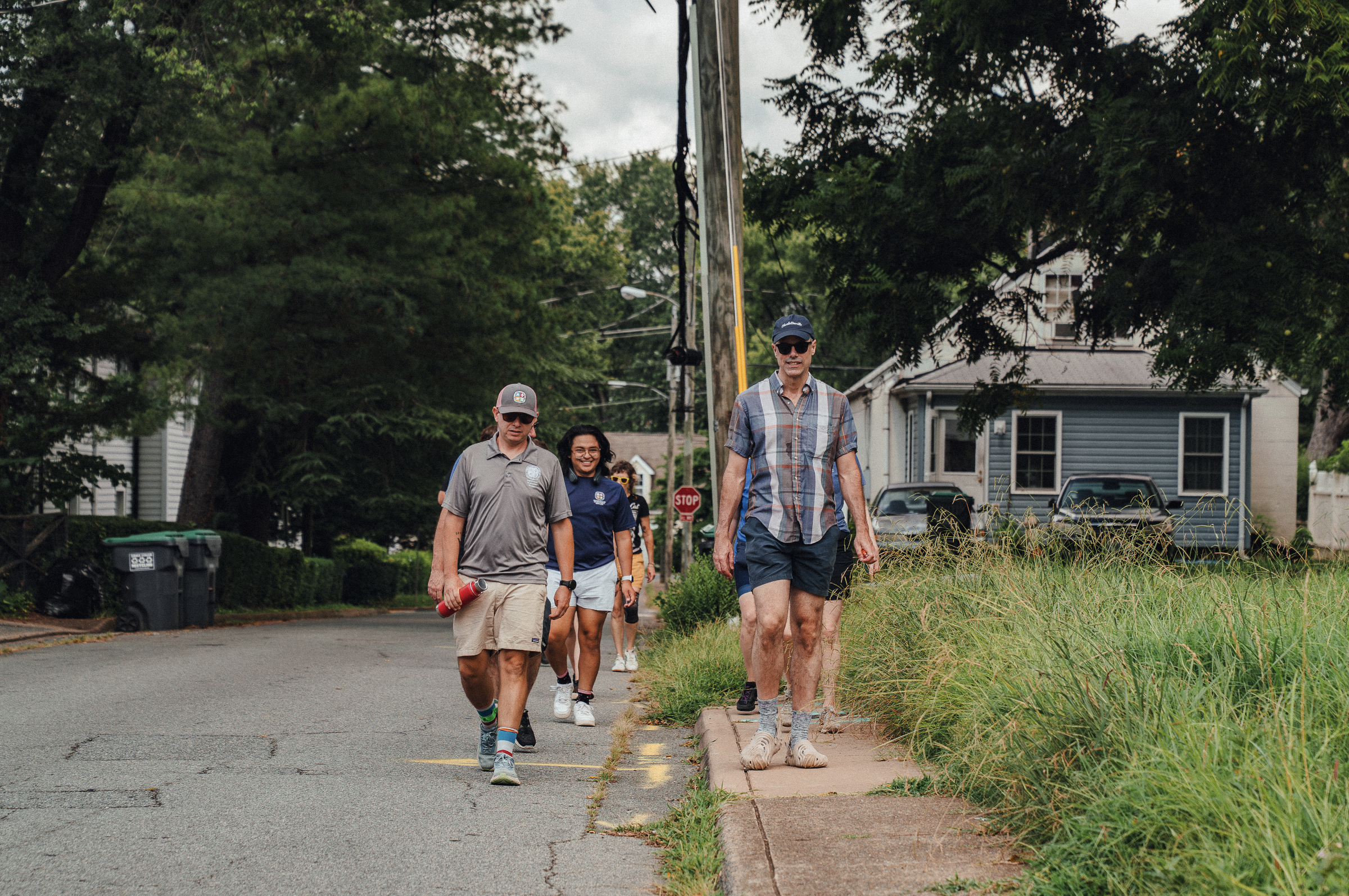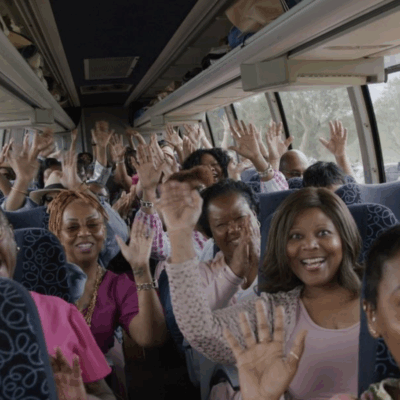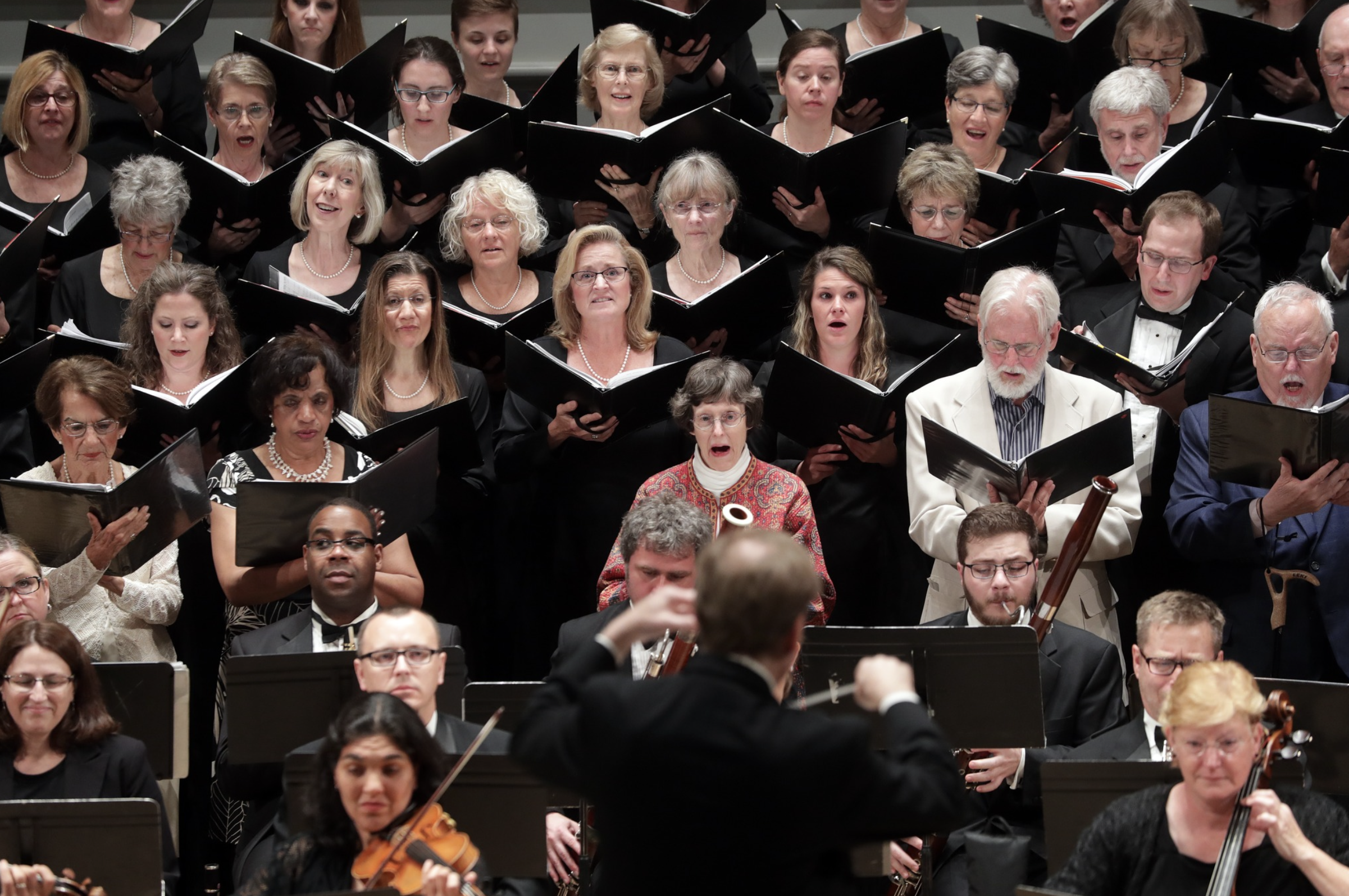
We all have a circuit—work, the grocery store, school, the gym—and soon these routes become routine. But there’s a lot of city that we don’t see unless we go exploring. All the more reason, says Tommy Safranek, to ditch your vehicle and go on Charlottesville’s Neighborhoods Walks.
Safranek is a little biased: He’s the bike and pedestrian coordinator for the City of Charlottesville. His job is to make the city a more foot/bike-friendly place—more exercise, less traffic, and fewer emissions, and having our roads last a little longer. Part of his job is finding and fixing the places where walking and biking needs a little help, like better sidewalks, bike lanes, or scooter parking spaces.
Safranek, an avid hiker, is also on the board of the Rivanna Trail Foundation. During COVID, the RTF began offering guided trail walks, which evolved into the popular Loop de Ville program, completing the 20-mile RTF circuit in 12 monthly sections. When he began working for the city, Safranek suggested doing a similar program in Charlottesville’s neighborhoods.
“Over the years, the city has outlined a number of neighborhoods within the city for planning purposes,” says Safranek. “Our idea is to explore each of these areas, and learn more about it.”
The program’s kick-off was on Martin Luther King day in January 2024. “That’s probably the biggest event we’ve ever done,” Safranek says, considering the number of people turning out for the holiday and the number of co-sponsors. The walks have evolved into something more casual; on the second Sunday of every month, Safranek takes whoever wants to come along on a walk of about three miles through that month’s neighborhood. He plans a route beforehand that will be good exercise, but also allows the group (neighborhood residents, local history buffs, long-time Cvillians, newbies, etc.) to stop and talk about what they’re seeing.
“I try not to make the walks too formal,” says Safranek. “I try to start them near a bus stop so people can get there, and I leave time for someone to say, ‘Hey, let’s go check that out.’”
Safranek says the program has several goals. “The city is changing—the connections throughout the city are changing—and we are trying to break up that [isolation] a little. We can show people ways to move through the city along the trails, alleys, public access points. We also have people show us how they get around.”
One example he cites: A path through a neighborhood that kids used to get to school came out on a highly traveled road with no safe crosswalk because city planners didn’t know about the students’ shortcut. These walks also help Safranek’s team to identify places where pedestrian and bike access needs to be improved.
Above all, it’s a great way to get to know your hometown. City Councilor Natalie Oschrin, born and raised here, says she tries to go on the walk every month. “I’m a big history nerd, and a pro-pedestrian,” she says. “This is a cool way to see the city, and a great way to get people together.” As an at-large member of council, Oschrin wants to know more than just her neighborhood, “so I’m getting to meet people I might not otherwise meet. And the walks are easy to join, it’s free, there’s no special equipment, and it’s friendly and welcoming for all ages.”



